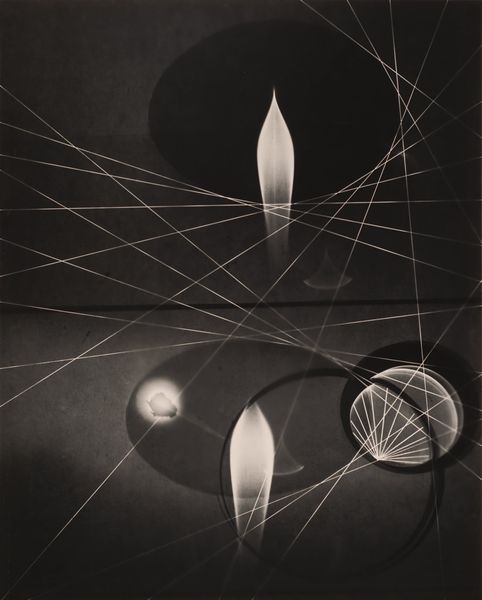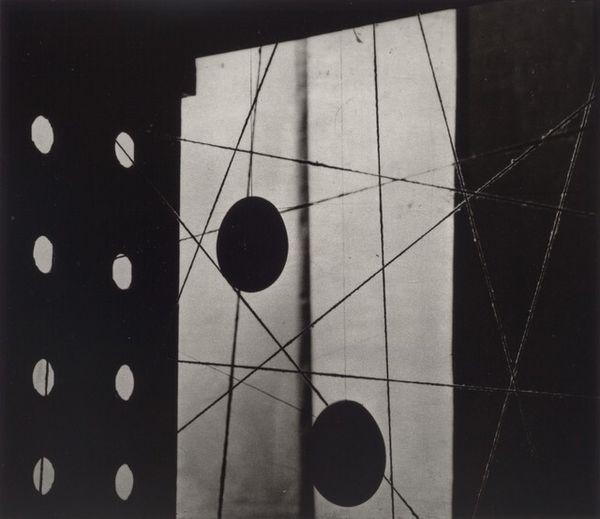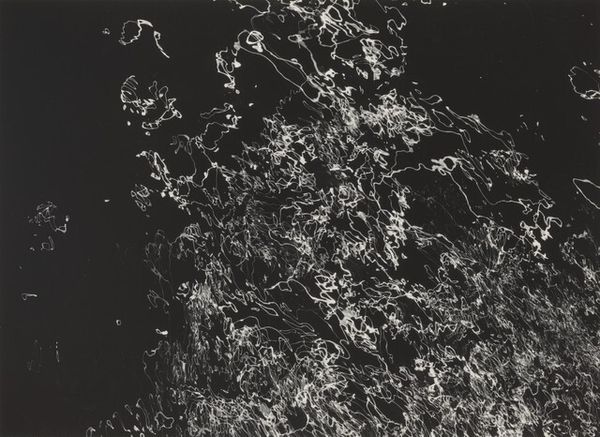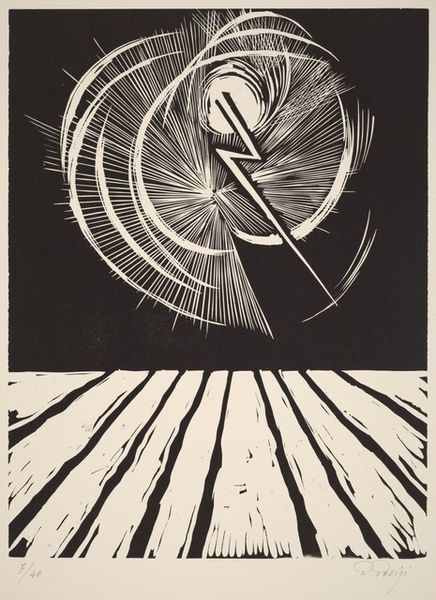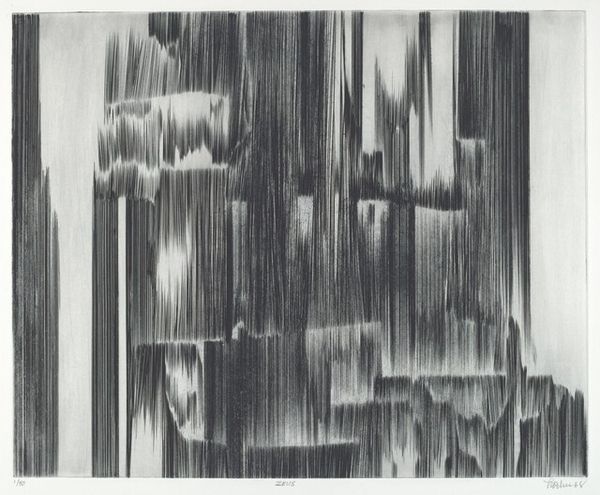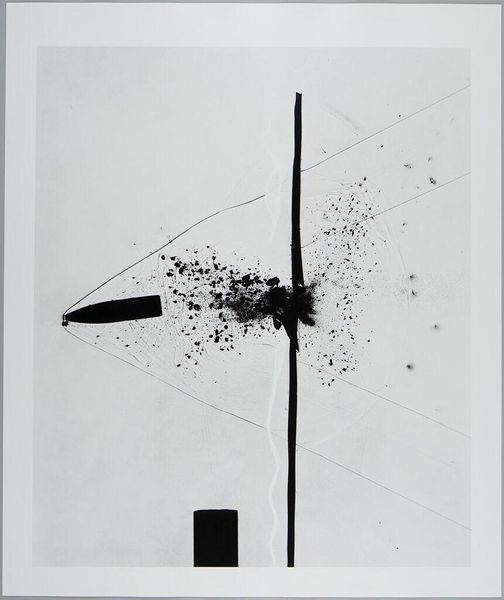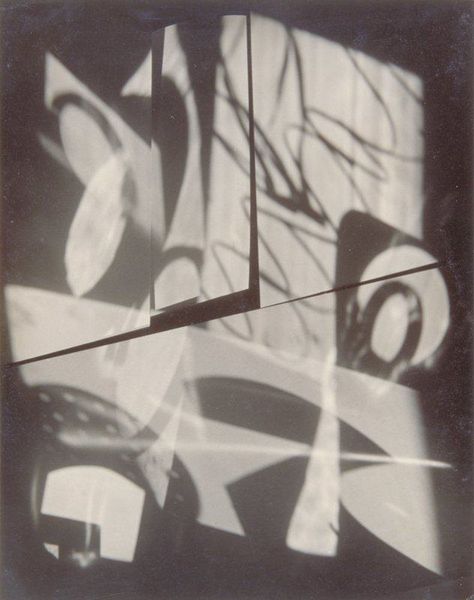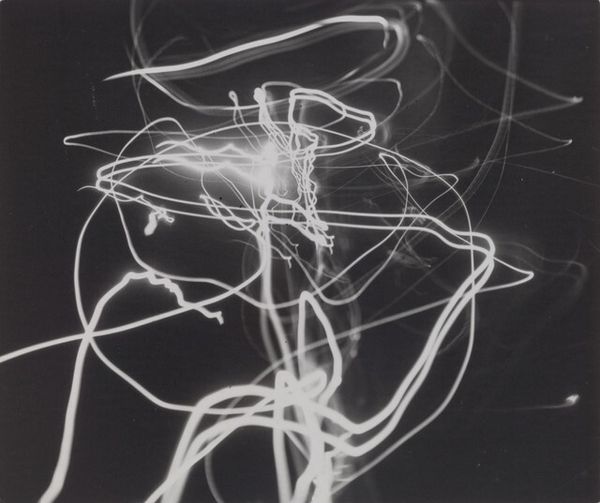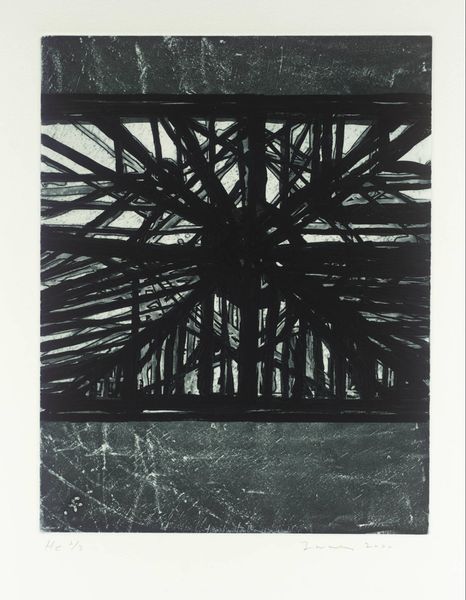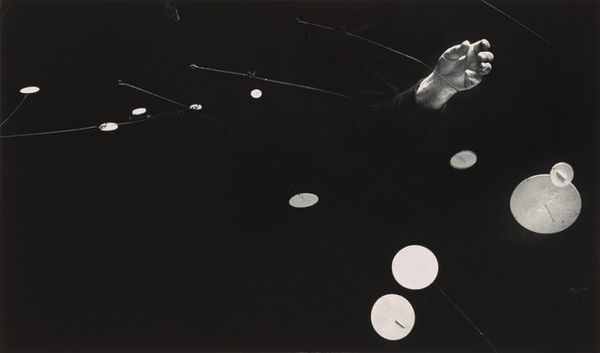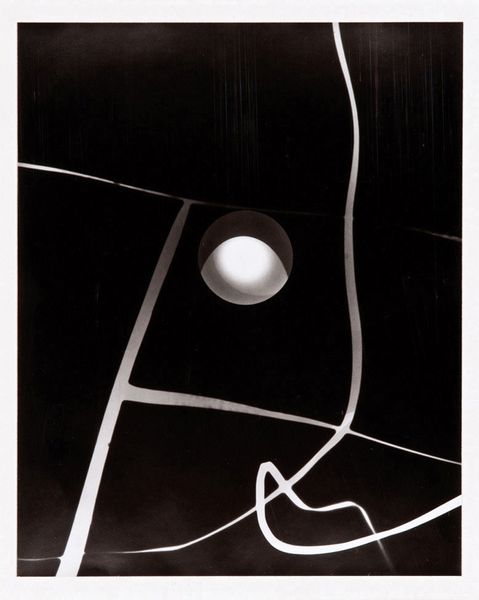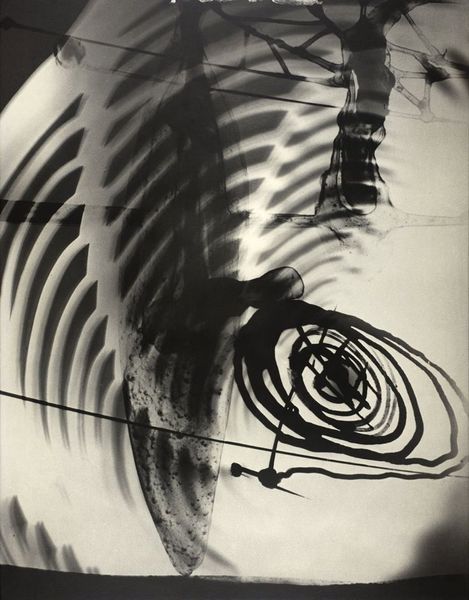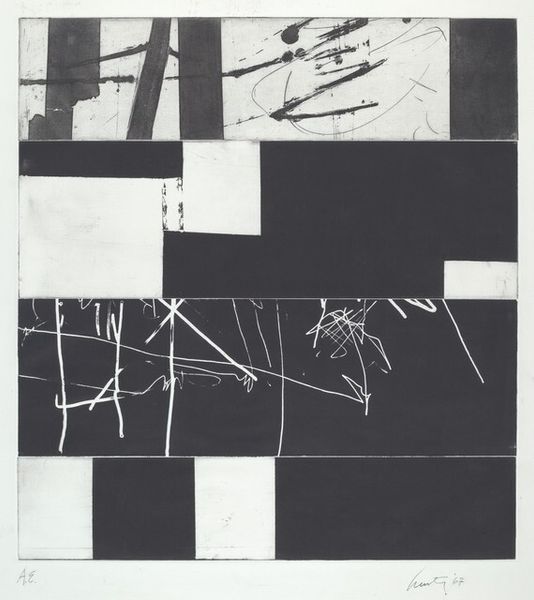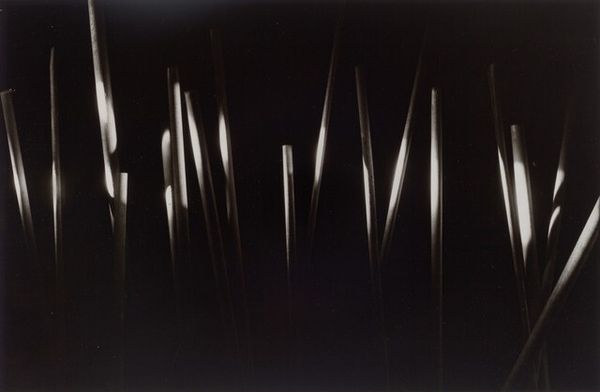
Copyright: György Kepes,Fair Use
Editor: This is György Kepes’ "Magnetic Fields," a 1938 photograph. The stark black and white contrast is immediately striking. There's something eerie, almost unsettling about it. What do you see in this piece? Curator: I see a meticulously constructed investigation into the physical properties of unseen forces. Kepes is using photography, a tool often associated with objective representation, to reveal the material presence of magnetism. Notice the clear evidence of process: the iron filings meticulously arranged, the rods used to create the magnetic field... these are not illusions, but carefully staged demonstrations of material interaction. Editor: So, you're focusing on the actual construction of the image itself? Curator: Precisely. And the cultural context. Think of the 1930s—an era grappling with rapid industrialization and scientific advancements. Kepes, deeply influenced by the Bauhaus, is reflecting this by bringing scientific exploration into art, exploring new image-making technologies and challenging what constitutes art. What does it mean when the subject isn't a person or landscape, but an invisible force made visible through careful material manipulation? Editor: It sounds like he's blurring boundaries. The line between art and science isn't so clear here. Curator: Exactly. Consider how the process democratizes artmaking. Anyone with access to these materials, the equipment and the knowledge, could theoretically recreate this. The act of creation moves away from pure artistic genius to accessible methods of investigation and re-creation. Also think how labor goes into this process. The choice of monochrome, the geometric composition--how do these material decisions contribute to the message? Editor: It seems much more intentional now that I'm thinking about materials used, and how he presented the content. Curator: Understanding the means of production opens a window into the artist's intentions and the broader cultural concerns they engage with. Editor: I hadn't considered the artistic intention as making an art/science artifact with simple tools accessible to most of the population. I see "Magnetic Fields" with new eyes.
Comments
No comments
Be the first to comment and join the conversation on the ultimate creative platform.
